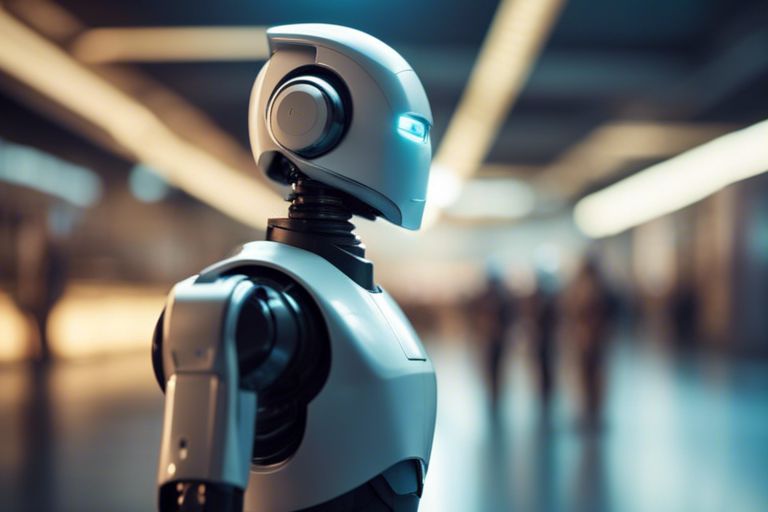The Rise Of Robotics In Emerging Technologies – Automating The Future
Penetrating various industries, robotics is revolutionizing the way we work and live. As advancements in AI and automation continue to reshape the technological landscape, it is imperative to understand the implications of this rapidly growing field. From increased productivity and efficiency to potential job displacement and ethical concerns, the integration of robotics in emerging technologies is a double-edged sword that holds both promise and peril. In this blog post, we explore the impact of robotics on our future, delving into the benefits as well as the challenges that come with this automated revolution.
Robotics in Industry
To harness the power of robotics in various sectors, industry has been at the forefront of adopting these advanced technologies. Robotics has revolutionized traditional manufacturing processes, enhanced productivity, and improved safety standards.
Manufacturing and Production
One of the key areas where robotics has made a significant impact is in manufacturing and production. Robots are increasingly being used to perform tasks that are repetitive, hazardous, or require extreme precision. Automation of production lines using robots has led to increased efficiency and reduced errors in manufacturing processes.
Robotic arms and machines equipped with advanced sensors and AI capabilities are able to work alongside human operators, performing tasks with speed and accuracy beyond human capability. With the integration of robotics, companies are able to achieve higher levels of output while ensuring consistent product quality.
Health Care and Assistive Robots
Robotics has also found a valuable place in the health care industry, where robots are used for a variety of purposes ranging from surgical procedures to patient care. Health care robots can assist in surgery by providing precision and minimizing invasiveness, leading to better patient outcomes.
Assistive robots, designed to help individuals with disabilities or elderly individuals in their daily tasks, have become increasingly prevalent. These robots can provide crucial support by aiding in mobility, communication, and monitoring health conditions, enhancing the quality of life for those in need.
Assistive robots are designed with a focus on improving the autonomy and independence of individuals, allowing them to perform tasks that may be challenging due to physical limitations. These robots play a vital role in providing assistance and support, helping to bridge the gap in care services and promoting a sense of empowerment among users.
Technological Advancements in Robotics
Artificial Intelligence and Machine Learning
Some of the most significant technological advancements in robotics have been driven by the integration of artificial intelligence and machine learning. These technologies have enabled robots to learn from their experiences, adapt to new situations, and make decisions autonomously. By leveraging complex algorithms and data analysis, robots can now perform tasks with a level of intelligence and accuracy previously thought impossible.
Furthermore, the integration of machine learning algorithms allows robots to continuously improve their performance over time. This self-learning capability empowers robots to become more efficient, productive, and precise in their operations, ultimately revolutionizing industries ranging from manufacturing and healthcare to transportation and agriculture.
Sensory Perception and Mobility Development
One of the key areas of focus in the development of robotics is enhancing sensory perception and mobility capabilities. Advanced sensors, such as cameras, LIDAR, and ultrasonic sensors, enable robots to perceive and interpret their environment with high precision. These sensors provide robots with the ability to navigate complex spaces, avoid obstacles, and interact with objects effectively.
Additionally, advancements in mobility development, such as the introduction of articulated joints, wheels, and legs, have significantly enhanced the agility and dexterity of robots. These advancements enable robots to move more fluidly and perform tasks that require intricate movements with precision and accuracy.
For instance, robots equipped with advanced sensory perception capabilities can effectively assist in search and rescue operations in hazardous environments where human access is limited or dangerous. These robots can navigate through debris, detect survivors, and relay critical information to first responders, ultimately saving lives in emergency situations.
Ethical and Economic Implications
Unlike in the past, the integration of robotics and automation into various industries raises critical questions regarding the ethical and economic implications of this technological advancement. As these technologies continue to evolve and proliferate, society must address the challenges they pose in order to navigate this new era of innovation responsibly.
Job Displacement and Skill Gaps
Ethical concerns arise as automation increasingly replaces human labor in various job sectors, leading to job displacement and potential skill gaps. While robots and AI can enhance productivity and efficiency, the loss of jobs can have significant social and economic repercussions. It is crucial to consider the impact on the workforce and develop strategies to retrain and upskill workers to adapt to the changing labor market.
Gaps in skills and employment opportunities may widen as automation disrupts traditional job roles. Industries must proactively address the need for reskilling programs and lifelong learning initiatives to mitigate the negative effects of job displacement. Collaborative efforts between governments, businesses, and educational institutions are essential to bridge the skill gaps and ensure a smooth transition to a more automated working environment.
Regulatory and Ethical Considerations
As robotics and automation become more prevalent in society, there is a growing need for comprehensive regulatory frameworks to govern their use. Ethical considerations such as data privacy, cybersecurity, and algorithm bias must be addressed to ensure these technologies are deployed ethically and responsibly. Establishing transparent guidelines and standards can help mitigate potential risks and build trust in the adoption of robotics in various fields.

Robotics in Daily Life
For many people, the idea of having robots assist in their daily lives seemed like a distant future, reserved only for sci-fi movies. However, with advancements in technology, robotics has seamlessly integrated into our daily routines, revolutionizing the way we live and work.
Domestic Robots and Personal Assistants
Daily tasks such as cleaning, cooking, and even monitoring home security have been transformed by domestic robots and personal assistants. These robots are designed to make life easier by handling mundane chores, allowing individuals to focus on more important tasks. Whether it’s a robotic vacuum cleaner sweeping the floors or a smart assistant managing schedules and reminders, these technologies have become indispensable in modern households.
Furthermore, domestic robots not only provide convenience but also cater to individuals with disabilities or aging populations who may require additional support. These robots offer companionship, assistance with daily activities, and even monitoring health metrics to ensure a safe living environment.
Robotics in Education and Entertainment
With the integration of robotics in education, students are exposed to interactive learning experiences that promote creativity and problem-solving skills. Robotics kits and programmable robots allow students to explore science, technology, engineering, and mathematics (STEM) concepts in a hands-on way, preparing them for future careers in technology-driven industries.
Additionally, in the realm of entertainment, robotics have paved the way for immersive experiences in theme parks, museums, and even virtual reality simulations. From interactive robot exhibits to robotic performers, these technologies create engaging and memorable experiences for audiences of all ages.
Education: By incorporating robotics into educational curricula, students develop critical thinking skills and deepen their understanding of complex concepts through practical application. This hands-on approach fosters a deeper appreciation for technology and encourages students to pursue careers in STEM fields, driving innovation and progress in society.
Final Words
Drawing together the advancements in robotics and emerging technologies, it is evident that automation is reshaping the future. The rise of robotics is revolutionizing industries, streamlining processes, and improving efficiency. As we navigate through this era of rapid technological growth, it is crucial to embrace and adapt to the changes brought about by robotics. By understanding the potential of automation and harnessing its power in innovative ways, we can create a more productive and sustainable future. The key lies in embracing the transformative power of robotics and leveraging it to automate tasks that were once deemed impossible. The future is automated, and it is up to us to adapt and thrive in this new era of robotics in emerging technologies.
FAQ
Q: What is the importance of robotics in emerging technologies?
A: Robotics plays a crucial role in emerging technologies by automating processes, increasing efficiency, and providing innovative solutions to complex problems.
Q: How are robots revolutionizing industries in the future?
A: Robots are revolutionizing industries by streamlining production, enhancing precision, reducing human error, and ultimately driving progress in various sectors.
Q: What are the key benefits of incorporating robotics in everyday life?
A: The key benefits of incorporating robotics in everyday life include improved productivity, enhanced safety, cost savings, and the ability to handle repetitive tasks with precision.
Q: How does the rise of robotics impact job markets?
A: The rise of robotics may impact job markets by displacing certain roles while creating new opportunities for skilled workers in the field of robotics maintenance, design, and programming.
Q: What challenges are associated with the integration of robotics in society?
A: Challenges associated with the integration of robotics in society include concerns about job displacement, ethical considerations, data privacy, and the need for regulations to ensure safe and responsible usage of robotic technologies.
![]()












